|

|
Florida Governors
Photos and text Courtesy, Florida State Library and Archives.
|
|
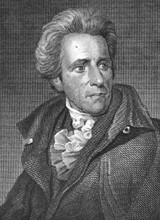
|
General Andrew Jackson
United States Commissioner and Governor of the Territories of East and West Florida
(March 10, 1821)
The ceremonies of transfer from Spain to the United States took place on July 17, 1821 in Pensacola.
Previously, on March 10, 1821, General Andrew Jackson
was named by President Monroe as "Commissioner of the United States
with full power and authority to take possession of and to occupy the
territories ceded by Spain to the United States..."
On the same day, he was also appointed by President
Monroe to use in the territories of East and West Florida "all the
powers and authorities heretofore exercised by the Governor and Captain
General and Intendant of Cuba, and by the Governors of East and West
Florida."
Three months later Jackson left Florida, never to return.
Richard Keith Call met General Andrew Jackson in 1813
in the Creek War and subsequently served as Jackson's aide de camp,
beginning a lifelong friendship. | | | | 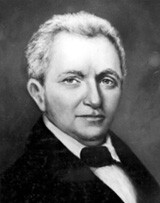
| William Pope Duval
First Territorial Governor
(April 17, 1822)
President Monroe appointed William DuVal to succeed Andrew Jackson
as Governor of Florida, ignoring Jackson's recommendation of Colonel
William King for the job.
Born in Virginia, William DuVal left home at the age of 14 for the
Kentucky frontier, settling in Bardstown to study law. He was admitted
to the bar at 19.
He came to Florida as a Territorial Judge. He was appointed Governor
of the Florida territory in 1822 and reappointed by Presidents Adams
and Jackson. | | | | 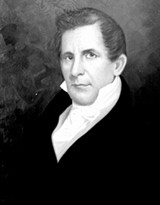
|
John Henry Eaton
Second Territorial Governor
(April 24, 1834)
Alleging intimacy between Major Eaton and Peggy O'Neale before their
marriage, wives of the members of President Andrew Jackson's cabinet
refused to accept her into society.
Whether it was because of questions about her marriage, or because
Peggy O'Neale Eaton refused to follow many of the restrictive customs
of the time, a scandal erupted.
Before it was over, allegations were made, duels were threatened, and Andrew Jackson's entire cabinet resigned.
After John Eaton resigned his position as Secretary of War, Andrew Jackson appointed him Governor of Florida. | | | | 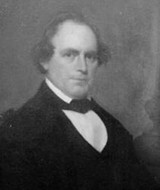
|
Richard Keith Call
Third Territorial Governor (March 16, 1836)
Fifth Territorial Governor (March 19,1841)
In 1839, President Van Buren removed Territorial
Governor Richard Keith Call from office on the grounds of "disagreement
on military policy". Van Buren then appointed Robert Reid Governor to
take Call's place.
During his governorship, Call had repeatedly
petitioned the Federal government for more military assistance in the
removal of the Seminole and Creek Indians from Florida. Frustrated by
what he considered to be a continued inadequate response, Call proposed
to organize and lead an independent force.
While this was the official reason given for his
removal, Call suspected that Van Buren was looking for an excuse to
appoint someone who would more rigidly follow the Democratic party line.
Call participated in the establishment and operations of banks and
insurance companies. These actions were at odds with the reigning
Democratic Party beliefs about the relationship that should exist
between government debt and private enterprise.
During the next presidential election, Call canvassed
in the North for the Whig candidate, William Henry Harrison. Harrison
defeated Van Buren and became President of the United States.
Harrison then appointed Call to his old place as Governor of Florida
| | | | 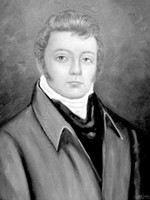
| Robert Raymond Reid
Fourth Territorial Governor
(December 2, 1839)
Robert Reid presided at the Convention to draft
Florida's Constitution in 1838. In 1839, he was appointed Governor of
Florida by President Van Buren, replacing Governor Call.
Reid advocated as vigorous a prosecution of the
Seminole War as his predecessor but his relations with the Federal
authorities were more amicable.
He died in Leon County on July 1, 1841, less than two years after becoming Governor. | | | | 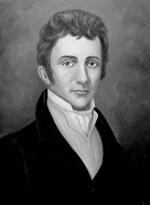
|
John Branch
Sixth Territorial Governor
(August 11, 1844)
When John Branch's wife, along with the other wives
of cabinet members, refused to recognize John Eaton's wife Peggy O'Neale
socially, it caused a scandal that resulted in the resignation of
President Andrew Jackson's entire cabinet.
Later, in 1844 Branch was appointed Governor of Florida by President John Tyler.
Before serving as Secretary of the Navy, Branch
served in North Carolina as a State Senator, Governor, and United States
Senator. |
|
return to main page
Copyright Notice
All files on this site are copyrighted by their creator.
They may not be reproduced on another site without
specific permission from Vickie Sturgill Stevens
. Although public information is not in and of itself
copyrightable, the format in which they are presented, the
notes and comments, etc., are.
© 2013 FlGenWeb Project
|
|






